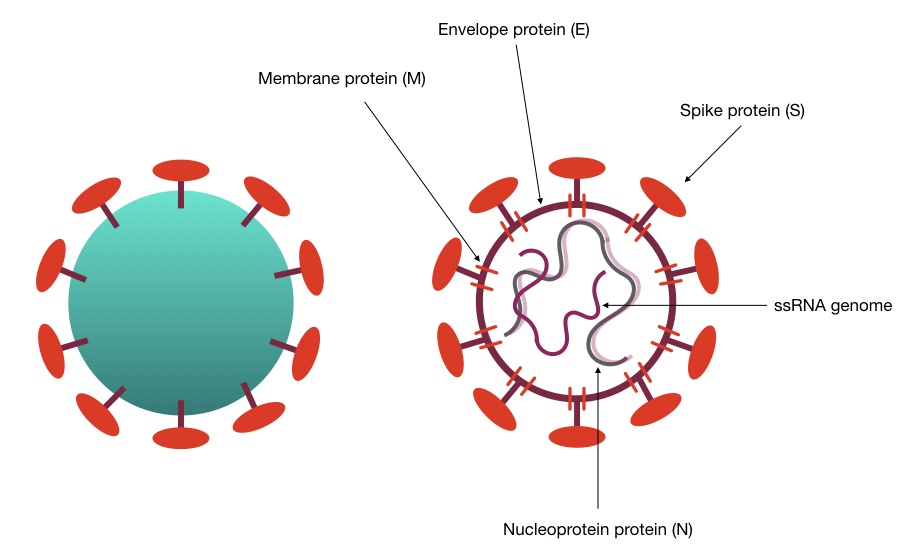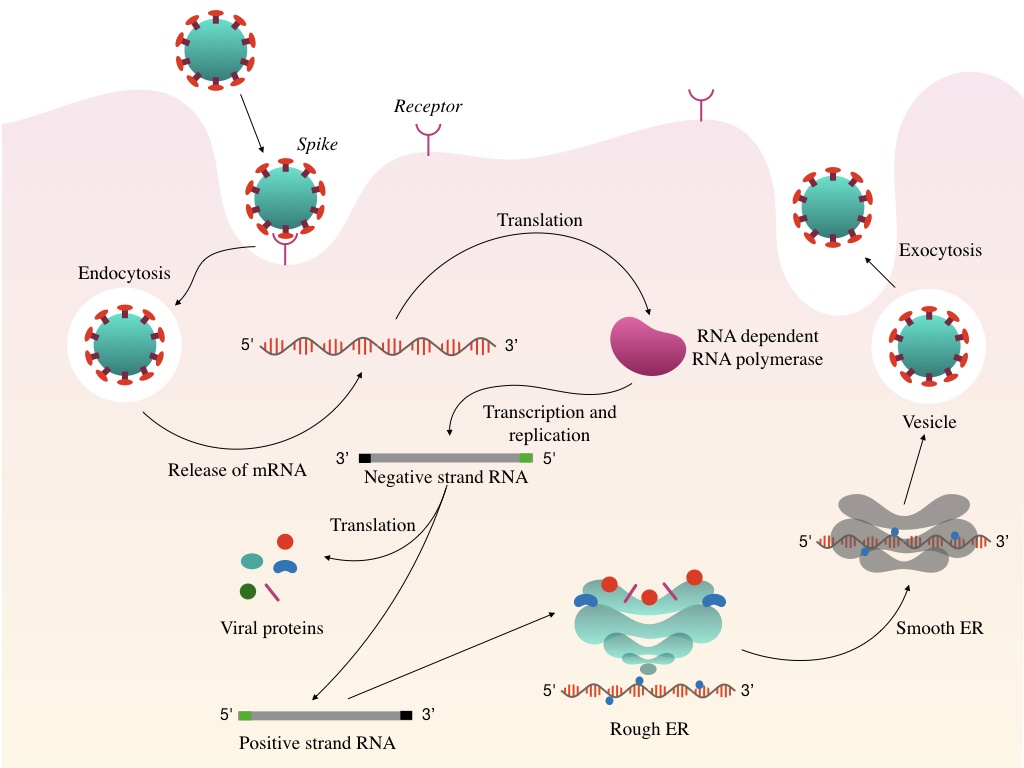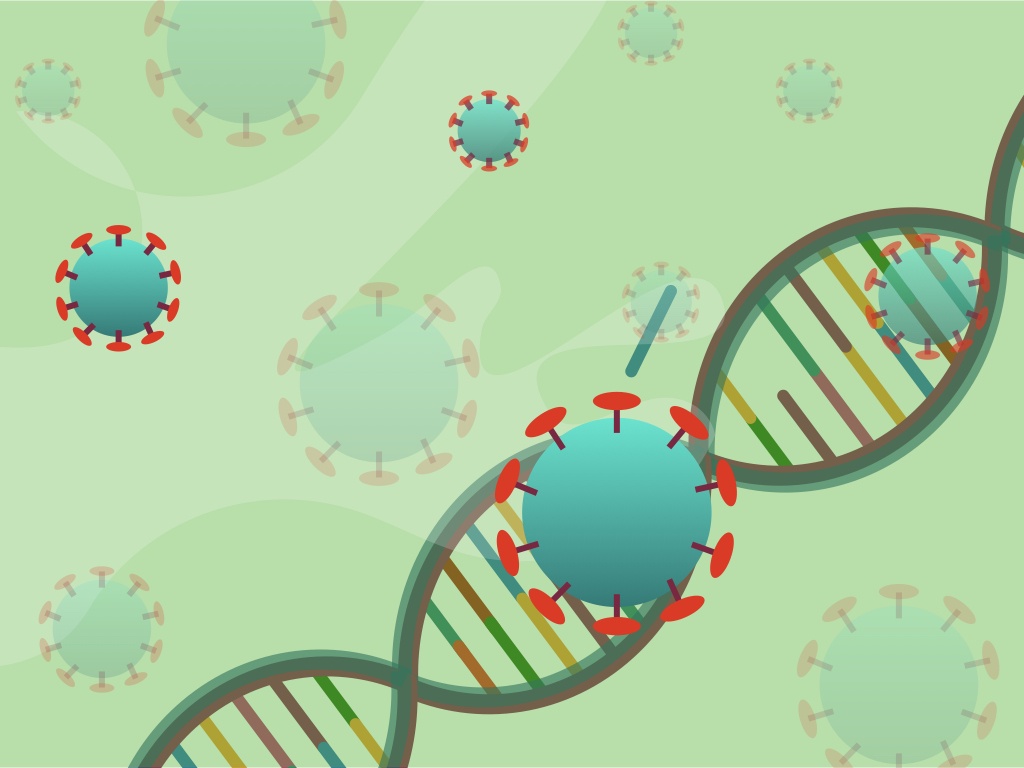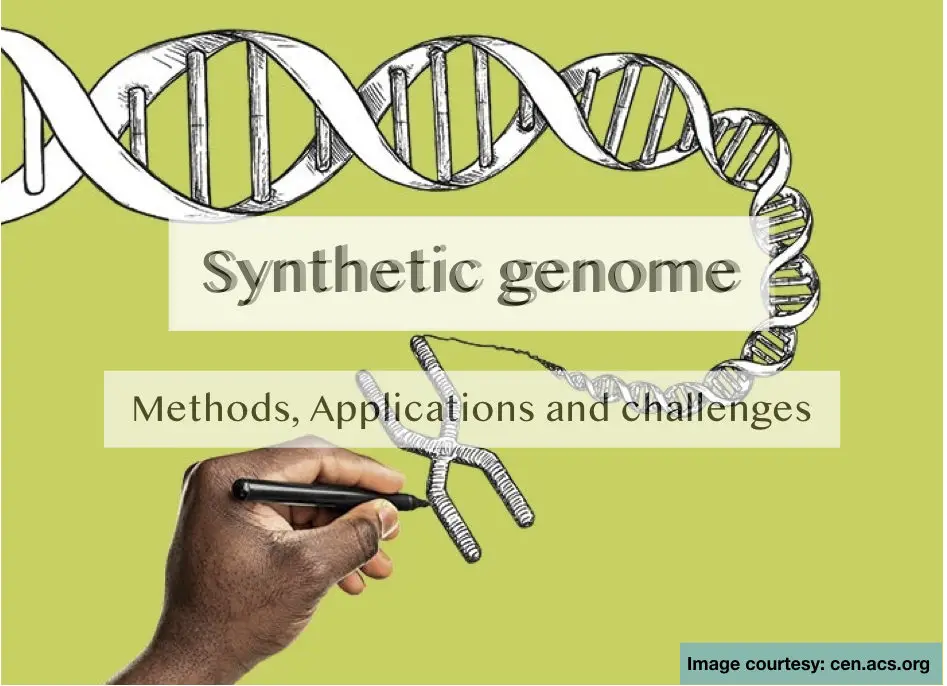“COVID-19 (coronavirus disease) is caused by the SARS-CoV-2 coronavirus strain. It’s responsible for the worldwide outbreak of the disease in present days.”
Before moving ahead into the topic let’s discuss some of the key facts of coronavirus.
Key facts:
- COVID-19 disease caused by the infection of coronavirus strain SARS-CoV-2.
- It infects persons of any race, ethnicity, or community.
- The risk of immediate serious infection is thought to be very low. Also, the death rate due to coronavirus infection is fewer as well.
- People with heart disease, diabetes, lung disease, HIV, and pregnant women are at higher risk for severe illness or COVID-19 infection.
- The infection doesn’t spread through the air. It is spread through the respiratory droplets or “aerosols“ of an infected person.
- High fever, dry cough and breathing difficulties are major signs of infection.
- It doesn’t spread through eating meat, beef, seafood or eggs, evidently.
- The viral aerosol remains active for 3 hours in the air, 24 hours on cardboard and 2 to 3 days on plastic & stainless steel.
RNA is the genetic material of the novel coronavirus. The single-stranded positive-sense RNA of coronavirus replicates, transcribes and translates in the host only.
The novel coronavirus, named as nCoV-2019 by WHO was the reason for the outbreak in China early this year. Thousands of people are now infected with the coronavirus strain SARS-CoV which was originated from the Wuhan city, Hubei Province, China.
Eating seafood and large animal markets were the possible reason behind the outbreak of it, assumed by scientists.
Scientists are trying to develop vaccines or other drugs to control its outbreak, however, until now, no satisfactory results obtained. To understand the mechanism of how the COVID-19 happens, first, we need to understand its structure and genomic constitution.
In the present article, instead of focusing on COVID-19 facts and figures, we will discuss its genetic composition and how it works.
Key Topics:
What is a coronavirus- COVID-19?
Corona is a Latin word; Coron– ‘Crown’ or ‘halo.’
The coronavirus denoted as CoV is a type of retrovirus pseudotyped (it’s not true retrovirus) responsible for the respiratory infections in eukaryotes, especially in mammals and birds. It’s zoonotic- their first hosts are animals, however, the signs and symptoms of the infection are more serious in humans.
CoV is the larger class of virus that causes common cold to respiratory problems like MERS-CoV (Middle East Respiratory Syndrome) and SARS-CoV (Severe Acute Respiratory Syndrome). Notably, in extreme conditions, a patient may die soon due to a lack of immediate treatments.
Nowadays the COVID-19 is more in a debate because of its lethal behavior towards humans. SARS-CoV, MERS-CoV, and NL63 are the only three viral strains that are studied well, until now.
The coronavirus belongs to the nidovirales order. Positive-strand RNA genome and a rigid envelope are unique characteristics of the virus of this family.
Electron microscope studies reveal that the virions (of SARS-CoV-2) are spherical shaped, 125nm in diameter, and have spike protein on its surface.
Coronavirus was first discovered in 1960 from chicken. Here I have listed some knowns viral strains.
| Strain | Year of study | genera of virus |
| SARS-CoV | 2003 | Betacoronavirus |
| HCoV NL63 | 2004 | Alphacoronavirus |
| HCoV-229E | Alphacoronavirus | |
| HKU1 | 2005 | Betacoronavirus |
| MERS-CoV | 2012 | Betacoronavirus |
| 2019-nCoV or COVID-19 | 2019 | Betacoronavirus |
“An anteater pangolin is a prime suspect for the spread of COVID-19, not bats or other animals”, says David Cyranoski in their recent research.
MERS-CoV and SARS-CoV were transmitted to humans from camels and civet cats, respectively but both strains aren’t so lethal, unlike SARS-CoV-2 which evolved recently and responsible for disease outbreak.
As per the research evidence of South China Agriculture University, the coronavirus was present in smuggled pangolins and that had 99% genetic similarities with the COVID-19 spreading in humans. Henceforth, It might be spread through the anteater, assumed by researchers.
Common cold, fever, cough, breathing difficulties, and short breaths are common problems and symptoms observed in persons infected with coronavirus (COVID-19). If not treated well, in worse conditions, it causes pneumonia, respiratory syndrome and infrequent infections, loss of kidney function and death, as per WHO’s report.
In some animals like pig, camels and chicken, upper respiratory tract infection and diarrhea are seen.
“SARS-CoV-2 coronavirus stain is a non-retroviral or pseudotyped retrovirus with plus-strand RNA.
Genome of Coronavirus:
The nucleic acid is the genetic material present in every living entity on earth. Either DNA in all organisms or RNA is some viruses are two forms of it. Any form of nucleic acid functions to form proteins and transfer genetic material to consecutive generations of the organism.
Unlike other organisms and viruses, coronavirus has RNA as their genetic material-a very rare form of the virus. It’s an RNA virus. The ribonucleic acid of it is surrounded by the nucleocapsid. The capsid of coronavirus is helical in symmetry.
Notably, the coronavirus is the largest RNA virus among all retrovirus families. Their genome is 27 to 34kb in size.
The ssRNA of it follows positive sense packaging. It is one of the longest and stable RNA genomes in nature. It may possible that the positive sense coiling makes it more stable.
Genetically the coronavirus is classified in four different genera in which Alphacoronavirus and Betacoronavirus infect mammals while Gammacoronavirus and Deltacoronavirus infect birds only. None of the animals is a true asymptomatic carrier of it.
The RNA genome of the coronavirus has approximately 6 to 11 open reading frames. In which 16 non-structural proteins- nsps only encoded from a single ORF, the first one. The first ORFs encode ~67% of all it’s protein portion. Remaining ORFs forms other structural proteins.
Several genes of the coronavirus genome are Rep 1a and 1b for replicas, genes for the spike (S), membrane (M), nucleoprotein (N), envelope (E).

Till now, six different species of coronavirus have been sequenced and submitted to the GenBank.
Some of the common genome features of the coronavirus strains are explained here:
- The ORF1a and 1b are the largest genes of coronavirus spanning two-third of the entire genome. It majorly encodes non-structural proteins which help in replication and transcription during host infection.
- All viral mRNA has 5’- methylated cap and 3’- polyA tail with UTRs.
- The untranslated region of 5’ end is up to 528 nucleotides long while the 3’ UTR region of the gene is 288 to 506 nucleotides long.
- The 3’ UTR region possesses duplicated octameric GAGA GAGA sequence upstream to polyA tail.
- All the ORFs start with the same AUG codon.
- All the structural proteins (S, E, M and N) are transcribed in 5’ to 3’ direction by RNA dependent RNA polymerase (RdRp).
Related article: Strategies to Prevent Transmission of COVID-19 (Coronavirus).
Structure:
Before understanding how it spreads, it is very important to understand the general structure of the coronavirus. The virion structure consists of an outer envelope, the core, nucleoprotein and a nucleocapsid.
The virus’s diameter is 120nm with a lipid bilayer and a core RNA genome. The envelope made up of lipid bilayer has a membrane, envelope and anchored spike proteins. The RNA genome is bound to the nucleocapsid protein. See the image below,

S protein: The S protein is homotrimeric in structure with S1 and S2 subunits. The S1 subunit functions as a receptor-binding domain while the S2 forms the stalk of the spike. Collectively both protein helps in virion-host cell receptor binding.
However, the protease present on a host cell cleaves the S protein into segments. The S protein is ~150KDa in size. The S protein is a kind of glycoprotein.
M protein: The membrane protein gives shape to virion. It is present in dimeric form. The size of the M protein is ~25 to 30KDa.
E protein: The E protein is smaller in size (~8-12KDa). It performs an important function during infection. It facilitates the assembly and release of the virion from the host cell.
Evidently, replicative virions of coronavirus without the gene for E protein aren’t much lethal to humans. However, lethality varies based on viral strains.
N protein: The N protein or nucleocapsid protein helps arranging the RNA genome into a beads-on-a-string arrangement.
The NTD and CTD domains of N protein are powerful enough to bind with the RNA in vivo as well as in vitro. Although their binding mechanism is different.
Yet another type of protein known as He- hemagglutinin esterase present in some strains of coronavirus like the betacoronavirus. It is believed that the present protein induces cell entry of S protein-mediated virions.
Replication of Coronavirus:
The replication of coronavirus occurs in the host cell cytoplasm near the nuclear membrane once it enters into the host cell.
As we said, the RNA genome of the present killer is larger and hence it translates many different proteins once it enters into the host cell through endocytosis. The virus enters into the host cell via binding of viral spikes to the cell receptor of a host cell. See the image below,

The deadly killer starts its action with its spike protein. The receptor-binding domain present on the S1 interacts with the receptor on the host cell surface.
It doesn’t matter, where the RBD (Receptor binding domain) is located on S protein, either on NTD or CTD, its only function is to interact with the receptor. Notably, some species also interact with various peptidase present on a cell surface, however, the type of peptidase varies from species to species.
In the next step, the virus enters into the host cell cytoplasm by proteolytic cleavage.
Dimeric cleaving by the protease digests spike protein into fragments and makes the protein non-functional. Proteases break the viral protein and release RNA into the cytoplasm and make it uncoated.
Next in the life cycle of coronavirus, the replicase gene translated first. From the ORF1, rep 1a and rep 1b gene forms replicase enzyme. The function of the replicase protein is to form the RNA polymerase to mediate the translation of the rest of the proteins.
The ribosome helps in the translation of all the proteins need for a cell to form the coronavirus. The ribosome in the cytoplasm recognizes the mRNA from its 5’m-cap and 3’-poly-A tail.
It is believed that all coronavirus genomic mRNA has a 5’ methylated cap with or without a 3’ poly-A tail. The translation process of coronavirus follows a 5′ cap mediated ribosomal entry mechanism.
First, it translates proteins from ORFs and forms polyproteins which later creates the RTC- multi-protein replicase transcriptase complex. This RTC complex performs the rest of the function for making different viral proteins.
The entire open reading frame constructs to protein subunit of the replicase, polyprotein pp1a and pp1ab. For expressing the polyprotein and to function properly, it uses the slippery sequences of 5’-UUUAAAC-3’.
Here it is very important to note down that the pp 1a and pp 1ab contain nsps (non-structural proteins). Now in the next step, the process of replication and translation begins. The nsps forms RTC- replication transcription complex.
The membrane-associated replication complex is the hallmark of the plus-strand or positive-strand RNA virus. The synthesis of RNA from the RNA is performed through the RNA polymerase present in the RTC.
The type of RNA dependent RNA polymerase (RdRp) has the power to construct RNA from the template mRNA. Notably, other non-structural proteins help in assisting the replication-transcription process. RNA polymerase, helicase and triphosphatase all are translated from various nsps domains.
Collectively enzymes start the synthesis of RNA from the viral RNA. the RTC mediates the synthesis of genomic and sub-genomic RNA. All structural and accessory proteins are translated from the sub-genomic mRNA.
First, the negative-strand RNA is formed, the negative strand intermediate RNA synthesizes both genomic and sub-genomic RNA.
The genomic and subgenomic RNA synthesis is regulated through the cis-acting elements. Here the non-coding 5-UTR and 3’- UTR play a significant role in it. Both 5’-UTR and 3’- UTR forms a hairpin-like stem-loop to regulate replication.
The 3’-UTR forms bulged stem-look like pseudoknot which is a hypervariable region. While the 5’- UTR region constructs the hairpin loop up to the replicase 1a gene. The function of both is to regulate the synthesis of either type of RNA.
Notably, the virus has a unique power to recombine using the homologous or non-homologous recombination. And that is why it is more unique than others.
Now here, first, the negative-strand RNA is constructed from the positive-strand RNA. Then in the next step, viral positive-strand RNA is formed from the negative-strand RNA.
This entire process is governed by the RNA dependent RNA polymerase. The main feature of RdRp is that it uses the RNA as a template and synthesizes new RNA de novo.
Therefore it doesn’t require any primer for nucleic acid synthesis.
For assembling and releasing of the viral particle the structural protein moves to the endoplasmic reticulum where the newly formed genomic positive-strand RNA migrates. The virus assembles all its proteins as components with the help of the ER into the mature virus.
In the last step, through the process of exocytosis, the coronavirus exists the cell.
Once the fully mature virus is formed it moves out from the host cell by secretory vesicles using the exocytosis process.
Screening and diagnosis:
Lack of standardized screening and diagnosis methods is one of the biggest problems in the present scenario. Notwithstanding, thermal screening is one of the most popular and trusted primary screening methods, accepted globally.
Thermal scanning:
You may have seen the railway and airport authorities scanning every person with some type of gun-like device. This device is actually a thermal scanner, they target it on the head part of a person to measure the body temperature.
Every live organism emits infrared energy or heat. A thermal scanning device captures the heat emitted from a person. After that, it creates a 2D type image of a person with different color patches as per heat emitted.
As we knew, in case of infection the bodily temperature of a person increases, the device captures 100F or above temperature as abnormal. The person is separated immediately and quarantined until tested for COVID-19.
This method is now the only trusted method used to screen the coronavirus infection.
Observing Symptoms:
Not much common but another technique used for the screening of coronavirus infection is by monitoring the symptoms. A trained practitioner asks about the condition of the patient if some predominant symptoms of infection are present or not, likely. If so the person is isolated immediately.
Common cold, dry cough and breathing difficulties are common symptoms of COVID-19.
Diagnosis methods:
Molecular genetic testing using rtPCR and serological testing are now available to validate coronavirus infection.
Molecular genetic testing:
Most laboratories across the United States use the RT-PCR based diagnosis method approved by the CDC for diagnosis of MERS-CoV-2 or COVID-19 (SARS-CoV-2) infection. However, the test is not yet approved by the FDA. CDC approved it through the Emergency Use Authorization.
The viral RNA is amplified, measured and/or sequenced to validate the active infection of COVID-19 in the patient. Two unique sequences of RARS-CoV-2 are amplified using the fluorescently labeled probes in real-time PCR.
As the target viral cells are very less, first the nucleic acid from the virus is amplified using the polymerase chain reaction. The entire process of the testing is as followed,
Approximately 1 ml of the Nasopharyngeal swab sample is collected first, followed by viral DNA extraction. Nasopharyngeal, oropharyngeal or bronchoalveolar lavage is taken. sputum, serum, and stool samples are also considered for testing.
Unique regions of viral RNA are amplified using two sets of probes and primers. For that first, the RNA is reverse transcribed into cDNA. In the next step, the cDNA is measured from the sample. Also, for cross-validating results, RNA sequencing is performed.
You can read the entire process of real-time PCR and reverse transcription PCR on our blog here.
Serological testing:
Our bodily cells produce antibodies against infectious pathogens. The antibody is a type of protein that protects our cells from microbial infection. The serological testing is practiced to find out antibodies against SARS-CoV-2 previous infection.
The conventional ELISA- enzyme-linked immunosorbent assay is used to measure the number of antibodies present in the sample.
Viral nucleocapsid and spike protein are the targets for the present test. Antibodies secreted against any of the proteins or both proteins are determined in ELISA using the specific substrate.
Scientists believe that the ELISA method is more a screening type of technique rather than a diagnosis method. Thus for confirming the results of either ELISA or RT-PCR another type of test is used, the microneutralization assay.
Microneutralization:
The present method is one of the most trusted and gold standard methods for the diagnosis of coronavirus infection.
Neutralizing antibodies are measured or quantified for validating the infection of the corona.
Nonetheless, it’s time-consuming, costlier and labor-extensive as compared with other methods.
Positive results in both the ELISA test and microneutralization test are considered as corona positive.
Notably, the present listed methods aren’t actually reliable to do diagnosis but to prevent the outbreak of the COVID-19 in present days scientists are using either of two methods for testing corona infection.
There are several limitations of each method used in the screening and the diagnosis of the corona infection.
Isolating RNAs for performing the real-time PCR assay is actually a tedious job to do. Expert geneticist needed to handle RNA isolation.
If the RNA is not available in sufficient quantity, the serological test is performed, otherwise.
Nonetheless, no validated or standardized protocol or method is available for the diagnosis of coronavirus.
Asymptomatic carrier:
“The asymptomatic carrier for the disease are the intermediate organisms who are infected with the pathogen and do not show symptoms of infection but it can transmit it to other organisms.”
Also known as a “carrier for infection”, pets and animals near to humans like cows, buffalo or pigs are considered as an asymptomatic carrier for so many infections.
In the case of coronavirus, initially, bats were considered as asymptomatic carriers. Then later, scientists found that not bats but pangolin, smuggled from other countries were the asymptomatic carrier of the infection.
Interestingly, previous research indicated that other animals like camels, cats, or bats show the symptoms of the disease as humans. Even though the virus was spread through the intermediate animal hosts, calling them asymptomatic carriers is scientifically not true.
We can say these animals might be the source of infection but are not a carrier.
In another case, children below the age of 12 are considered as carriers. If we analyze the data of coronavirus infection, infected child patients below the age of 12 are less. Therefore, it is presumed that they might be infected but don’t show signs or symptoms.
The infected patient below the age of 12 was also reported in China. No scientific evidence in support of the present assumption is reported to date. Conclusively, neither animals nor children below 12 can be considered as an asymptomatic carrier for infection.
Some FAQs:
What is coronavirus?
The coronavirus is an RNA virus that causes COVID-19. Strain SARS-CoV-2 is responsible for the outbreak in humans.
What are the symptoms of it?
Dry cough, fever and breathing problems are common symptoms of COVID-19.
What is COVID-19?
The COVID-19 is coronavirus infection disease-19 caused by the Severe Acute Respiratory Syndrome coronavirus- SARS-CoV-2.
What causes coronavirus COVID-19?
It is assumed that the coronavirus might be spread through animals like bat or pangolin. However, the supporting evidence is not reliable enough to prove them guilty.
It is caused by close contact with the corona infected patients. It is spread through the respiratory droplets (aerosols) of the infected patient.
What tests for coronavirus are available?
Viral DNA real-time PCR quantification, ELISA like serological testing and microneutralization are combinedly used for diagnosis of coronavirus, SARS-CoV-2.
Who is at risk?
As we said above, no risk is associated with absolutely healthy people. Pregnant women, diabetic people and the person with heart disease are more at risk. A person having mild to moderate illness with cough or flu may also be at risk of infection.
What treatments are available?
Currently, no treatment, specific drug, therapy, or vaccines are available to prevent COVID-19. However, malaria medication and HIV preventive antiretroviral drugs can help, as per some research. Besides, ventilation support and other routine medication can give some relief.
Conclusion:
Coronavirus is like a silent killer. It is now a big worry for the entire world. Nonetheless, by taking some daily care, we can remain safe. Use a mask, wash hands frequently, avoid unnecessary traveling, and quarantine in case of risk.
Maintain hygiene and avoid contacting suspected or an infected person. Lockdown yourself at home for several days until the outbreak stopped.
Resources:
- David Cyranoski, “Mystery deepens over animal sources of coronavirus. Nature 579, 18-19 (2020). doi: 10.1038/d41586-020-00548-w.
- Brian D.A., Baric R.S. (2005), “Coronavirus Genome Structure and Replication. In: Enjuanes L. (eds) Coronavirus Replication and Reverse Genetics. Current Topics in Microbiology and Immunology, vol 287. Springer, Berlin, Heidelberg.
- Fehr AR, Perlman S. Coronaviruses: an overview of their replication and pathogenesis. Methods Mol Biol. 2015;1282:1–23. doi:10.1007/978-1-4939-2438-7_1.



“covid 19 doesn’t spread through eating meat, beef, seafood or eggs, evidently.”why??
It infects respiratory system only. Probably that will be the reason.
Great site
Thank you Gus